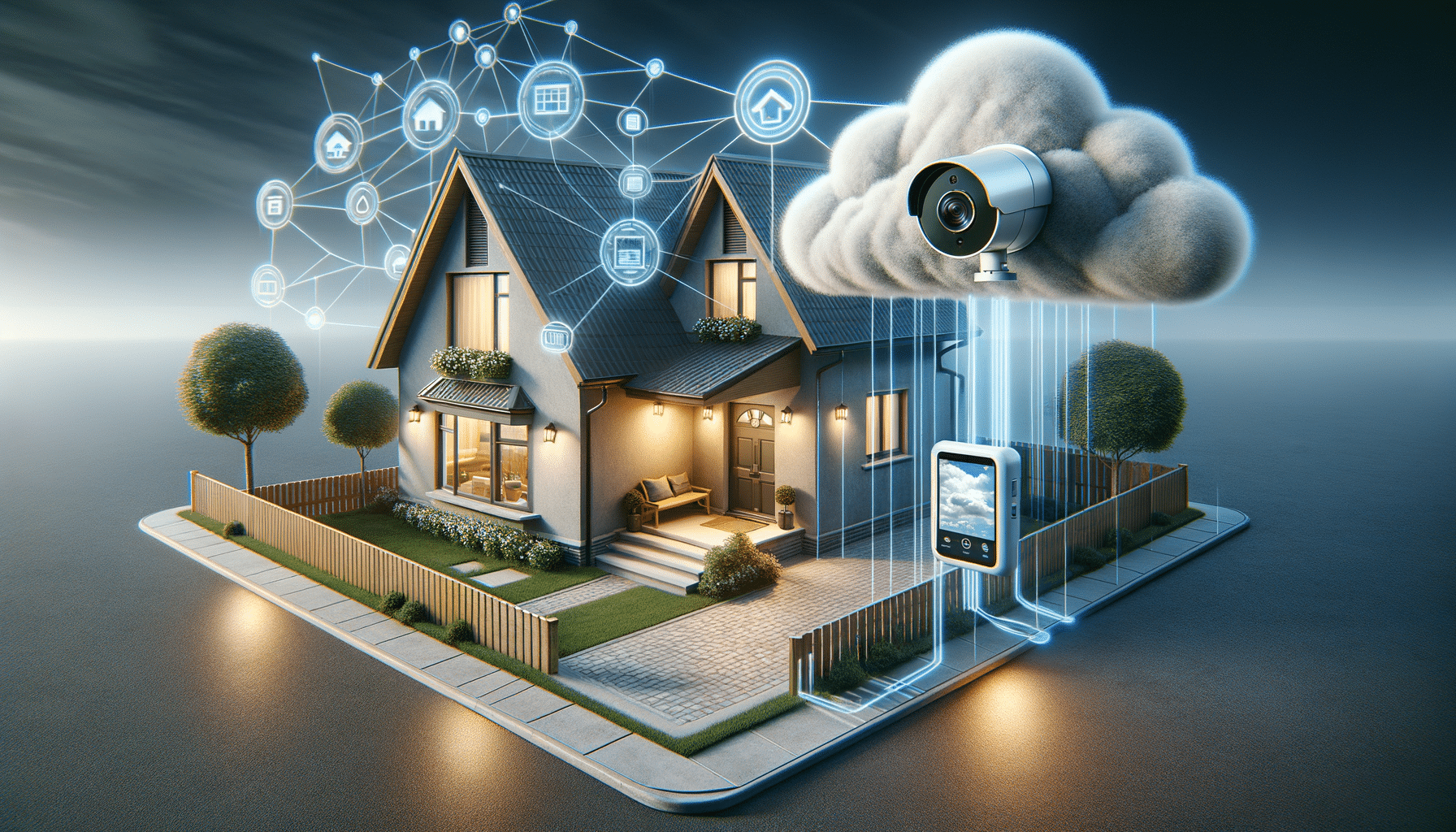
Cloud Managed Security Camera in the U.S
Understanding Cloud Home Security Cameras
Cloud home security cameras have revolutionized the way we protect our homes. These devices leverage cloud computing to store and manage video footage, offering several advantages over traditional security systems. Unlike conventional cameras that rely on local storage, cloud-managed cameras upload footage to a secure online server. This ensures that even if the camera is tampered with or stolen, the recorded data remains safe and accessible.
One of the primary benefits of cloud security cameras is their ability to provide real-time access to video feeds from anywhere in the world. This feature is particularly appealing to homeowners who travel frequently or have multiple properties to monitor. With the convenience of mobile apps and web platforms, users can easily check live feeds, review past recordings, and receive alerts for any unusual activity.
Moreover, cloud cameras often come with advanced features such as motion detection, night vision, and two-way audio. These capabilities enhance the security system’s effectiveness, allowing users to not only monitor their property but also communicate with visitors or deter potential intruders. The integration of artificial intelligence further improves these systems by enabling them to differentiate between regular movements and potential threats, reducing false alarms.
How to View a Cloud Managed Security Camera From Anywhere
One of the standout features of cloud-managed security cameras is the ability to view footage remotely. This capability is made possible through cloud storage and internet connectivity, allowing users to access their camera feeds via smartphones, tablets, or computers. To get started, users typically need to install a dedicated app provided by the camera manufacturer. This app serves as a central hub for managing camera settings, viewing live feeds, and accessing stored footage.
Once the app is installed and the camera is connected to the internet, users can log in from any location with an internet connection. This flexibility means that whether you’re at work, on vacation, or simply in another room, you can keep an eye on your property. Alerts and notifications can also be configured to inform you of any suspicious activity, ensuring you are always aware of what’s happening at home.
For those concerned about privacy and security, it’s important to ensure that the camera and app are set up with strong passwords and updated regularly to protect against unauthorized access. Many cloud camera providers also offer additional security features, such as end-to-end encryption, to safeguard your data from potential breaches.
Key Considerations Before Installing a Cloud Security Camera at Home
Before installing a cloud security camera, there are several key considerations to keep in mind. First, evaluate the coverage area. Determine which parts of your property need monitoring and choose cameras that offer the appropriate field of view and range. Consider the camera’s resolution as well, as higher resolution cameras provide clearer images, which can be crucial for identifying intruders.
Next, assess the camera’s connectivity. A stable internet connection is essential for cloud cameras to function effectively. Ensure that your home Wi-Fi is robust enough to support the camera’s data requirements without affecting other devices. Additionally, consider the power source for the camera. Some models are battery-operated, while others require a constant power supply, which may affect installation options.
Privacy is another critical consideration. Research the camera’s privacy features and understand how your data will be stored and used. Opt for cameras that offer strong encryption and privacy controls to protect your footage. It’s also wise to review the manufacturer’s reputation and customer service, as these can impact your overall experience with the product.
Finally, consider the cost of the camera and any associated subscription fees for cloud storage. While some cameras offer free basic storage, others require a monthly subscription for additional features and storage capacity. Weigh the benefits against the costs to find a solution that fits your budget and security needs.
Benefits of Cloud-Based Storage for Security Cameras
Cloud-based storage offers several advantages for security cameras, making it a popular choice for homeowners. One of the primary benefits is the enhanced security of data. By storing footage offsite, cloud storage ensures that video data is safe from physical damage or theft. Even if a burglar attempts to disable the camera, the recorded footage remains intact and accessible.
Another advantage is the scalability of cloud storage. Unlike local storage solutions, which may require additional hardware to expand, cloud storage can be easily increased to accommodate more footage. This flexibility allows users to store video data for longer periods without worrying about running out of space.
Cloud storage also simplifies the process of sharing footage. Users can easily grant access to specific clips or live feeds to family members, neighbors, or law enforcement. This feature is particularly useful in emergency situations where quick access to video evidence is essential.
Additionally, cloud storage providers often offer advanced analytics and features that enhance the functionality of security cameras. These may include facial recognition, vehicle detection, and customizable motion zones, which help users focus on relevant events and reduce false alarms.
Challenges and Limitations of Cloud Home Security Cameras
While cloud home security cameras offer numerous benefits, they also come with certain challenges and limitations. One of the main concerns is the reliance on internet connectivity. Without a stable and fast internet connection, the camera’s performance can be compromised, leading to delays in accessing live feeds or footage.
Another challenge is the potential for privacy breaches. As with any internet-connected device, cloud cameras can be vulnerable to hacking if not properly secured. It’s crucial for users to implement strong passwords, enable two-factor authentication, and keep their devices updated to mitigate these risks.
Cost is another consideration, as cloud storage and advanced features often require a subscription. While some users may find the additional fees justifiable for the added security and convenience, others may be deterred by the ongoing expenses.
Finally, there may be compatibility issues with existing smart home systems. Not all cloud cameras integrate seamlessly with other devices, which can limit their functionality. It’s important to research and choose cameras that are compatible with your current setup to ensure a cohesive security system.


